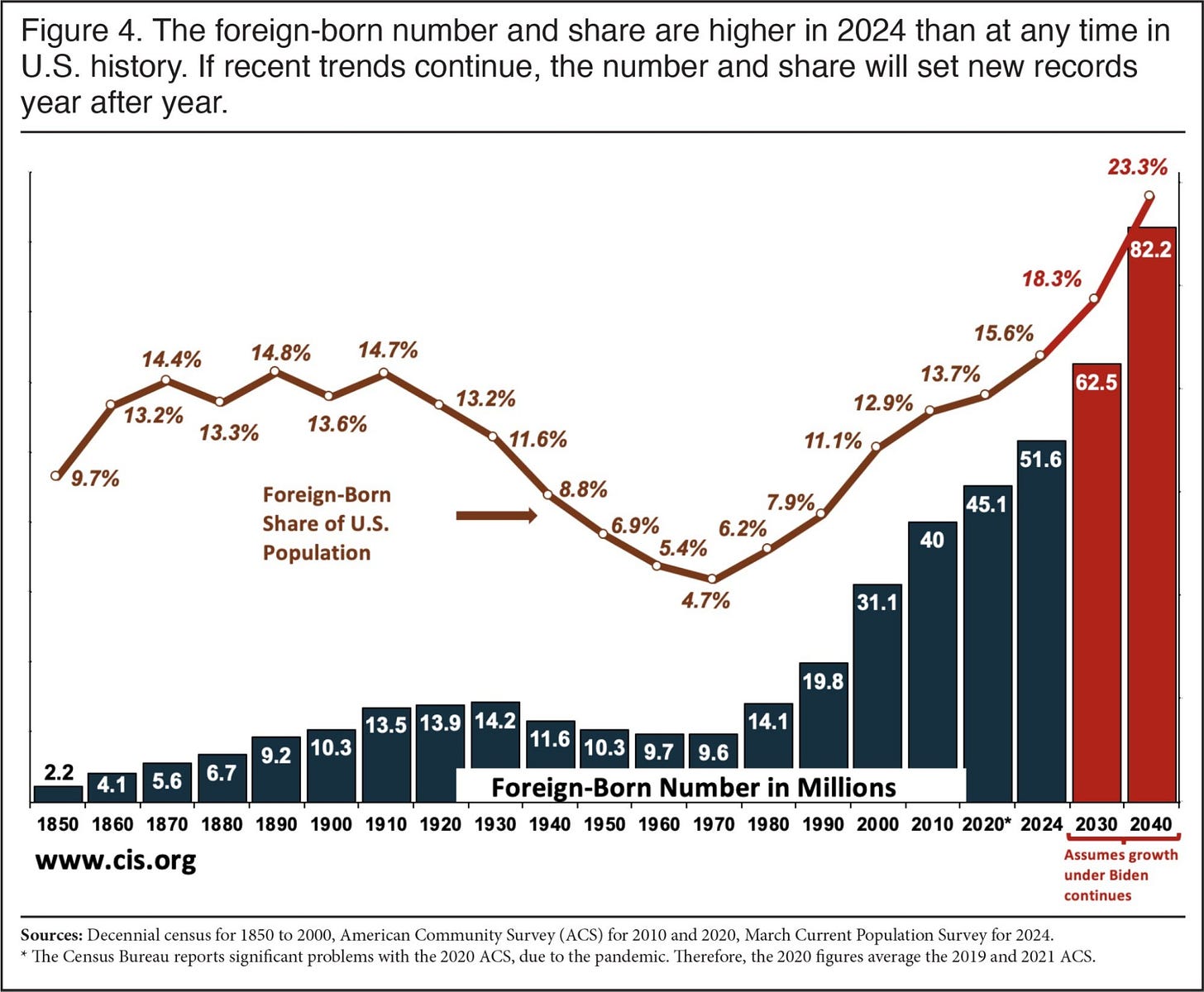New BiggerPockets Article: Immigration Policies Have Helped Boost Your Property Values
—But Not Without a Cost

This is an excerpt from an article originally published on BiggerPockets.com
Immigration is a particularly contentious issue these days. It came in second amongst Republicans and fifth overall as the most important issue for voters in the 2024 election. (Unsurprisingly, the economy came in first.)
Immigration itself, however, is a broad term and can really be split into (at least) three subgroups: high-skilled immigration, low-skilled immigration, and illegal immigration.
The United States issues about 1 million green cards (legal permanent residence) per year. In 2022, there were 12.7 million lawful permanent residents in the United States, of which about 1 million are granted citizenship each year (after an arduous process). Currently, the foreign-born population in the United States stands at a record, both in terms of the number (51.5 million) and percent of the population (15.6%), with both of those numbers expected to increase in the years to come.
Regarding illegal immigration, the population has moved substantially to the right on this issue over the past few years, with one New York Times poll finding that 55% of voters support “deporting all immigrants who are here illegally.” This includes 32% of Democrats, by the way. Such a policy was once considered extreme, but given the chaos on the southern border in 2022 and 2023, opinions shifted quite dramatically.
This is true even for legal immigration. According to Gallup, in 2021, there was virtual parity between those who wanted to increase immigration and those who wanted to decrease immigration. In June 2024, 55% wanted immigration reduced, versus only 16% who wanted it increased.
Of course, such a policy would have an enormous effect on the economy. The usually quoted number of 11 million illegal immigrants is almost certainly too low. Indeed, that’s the same number that has been given since the early 2000s! A 2018 Yale study used mathematical models of various demographic data to estimate that there were 22.1 million immigrants living in the country illegally at that time.
Between 2022 and 2023, the number of migrants illegally crossing the southern border skyrocketed. There were an unprecedented 7.2 million encounters at the southern border, with 1.8 million known and likely millions of unknown “gotaways.” Indeed, it got so bad that even liberal bastions such as New York were complaining about being unable to handle the influx.
The Congressional Budget Office concluded that “the net immigration of other foreign nationals exceeds that rate by a total of 8.7 million people over the 2021-2026 period.” Thus, in all likelihood, there are somewhere between 25 million and 30 million people living in the United States illegally.
Deporting at least 5% and possibly almost 10% of your population would be incredibly difficult, prone to abuse, and would almost certainly throw the United States into a recession. (Although it should be noted that the Dominican Republic did something like this in 2024 without much media attention.) Of course, in contrast to the acute problems such deportations would cause the economy, such large levels of illegal immigration can create chronic economic problems, which will be discussed, along with the benefits and costs of legal migration, particularly for the real estate industry.
First, however, we should address Donald Trump’s policies regarding immigration. It will likely aggravate those on both sides of the aisle to say so, but it’s quite clear that most of what Trump’s administration has done thus far is merely theatrical.
…
To read the read the rest, please visit to BiggerPockets.com
You can find my other book, Awesomeness, here.
And the audiobook here.
And please subscribe to my YouTube channel.



